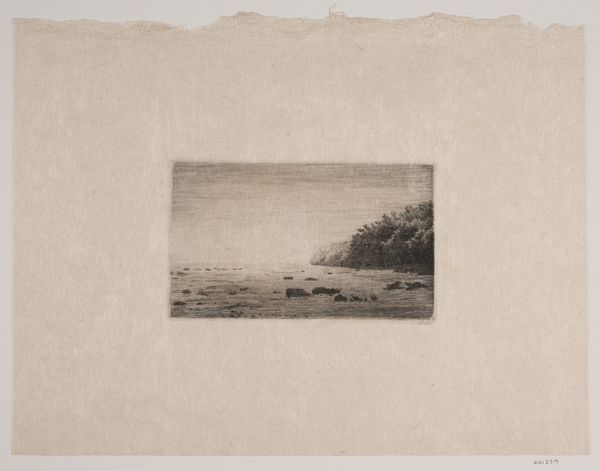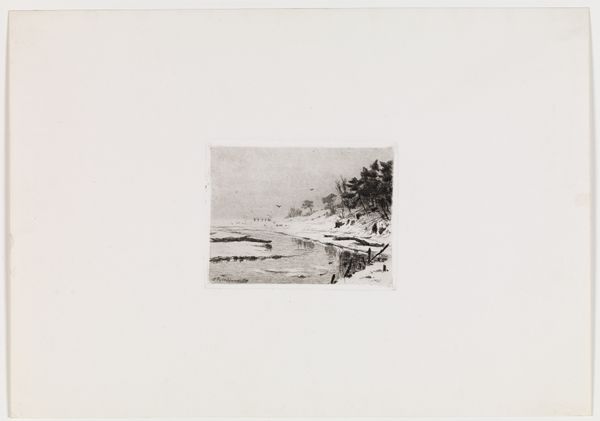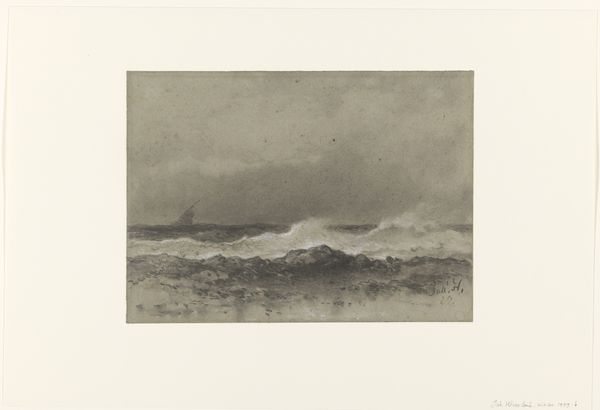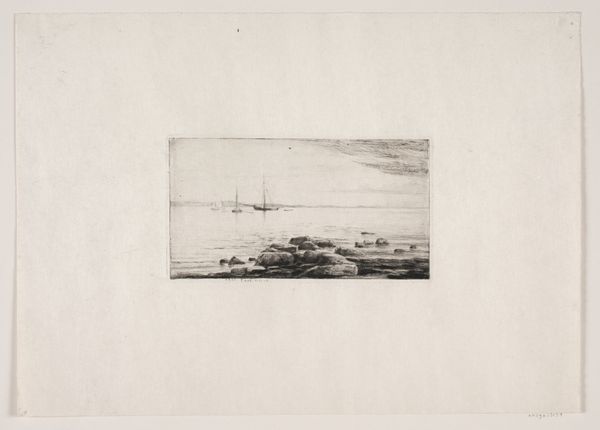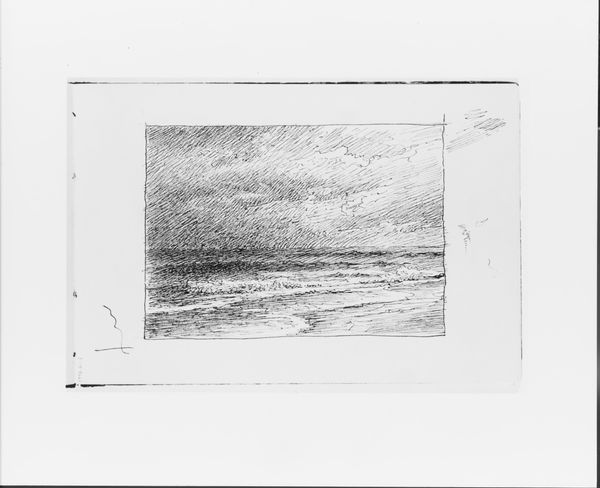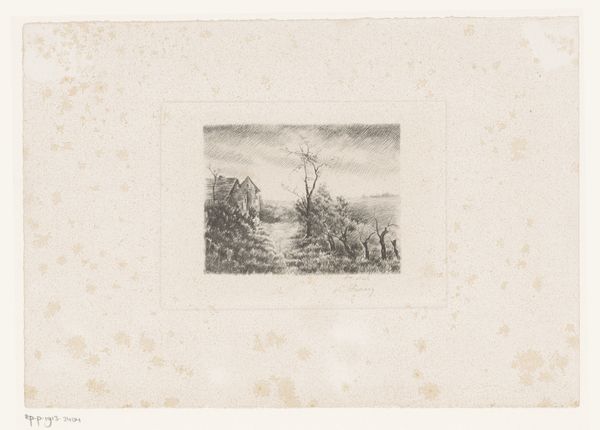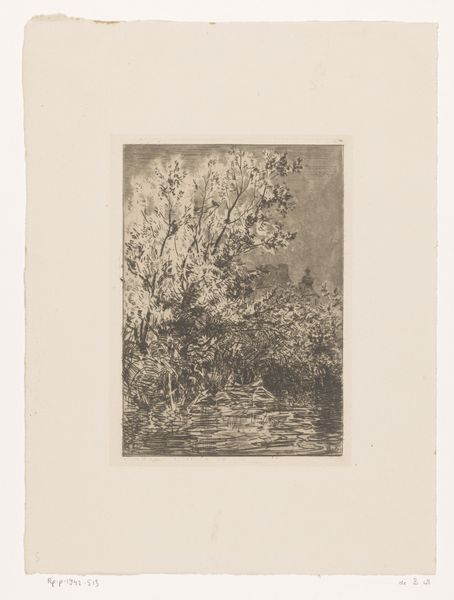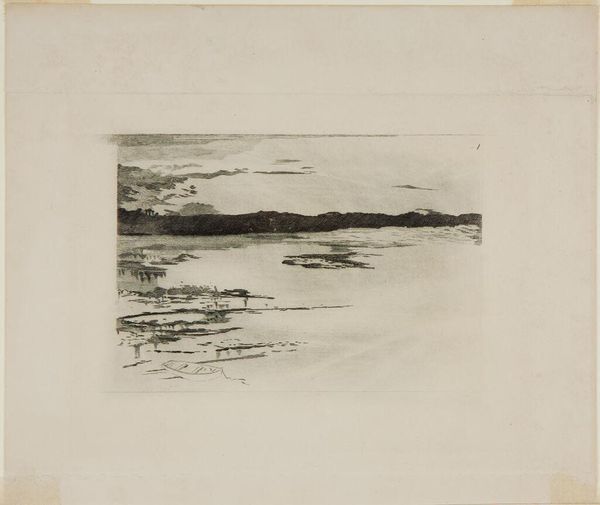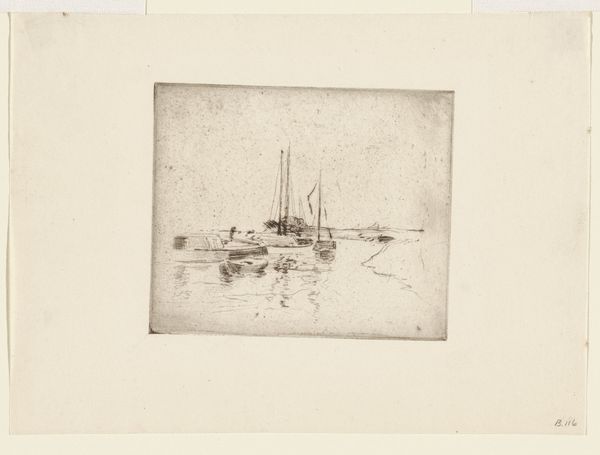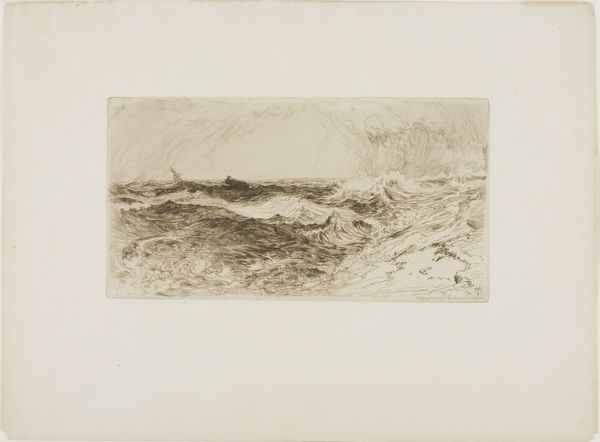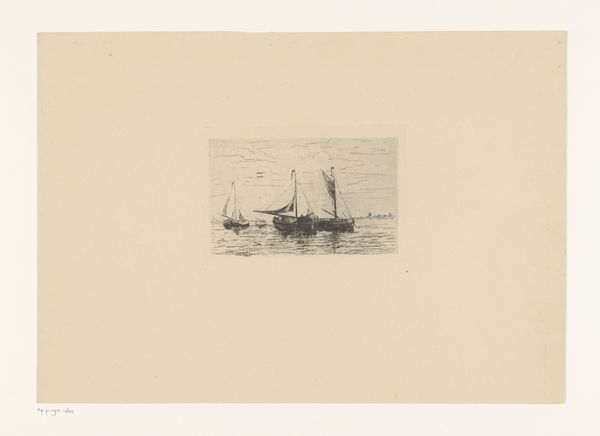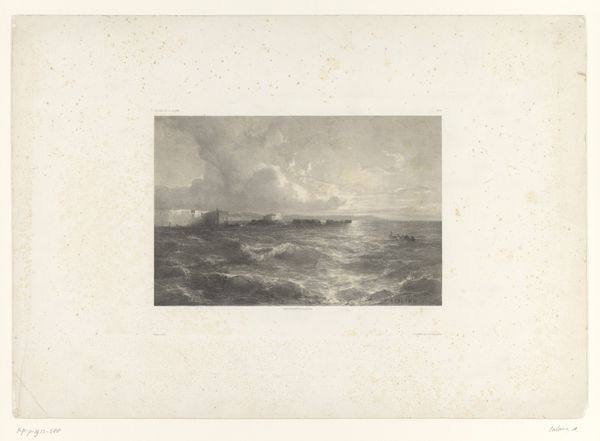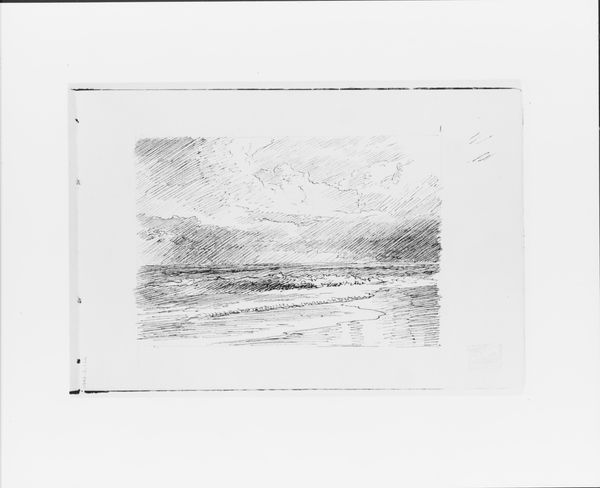
print, etching, graphite
# print
#
etching
#
landscape
#
graphite
#
realism
#
monochrome
Dimensions: height 116 mm, width 95 mm, height 60 mm, width 60 mm
Copyright: Rijks Museum: Open Domain
Curator: Here we have "Boerderij aan horizon," or "Farmhouse on the Horizon," a print made by Kees Stoop, likely sometime between 1944 and 1990, now held in the Rijksmuseum. Editor: My first thought? Desolate. The texture in the foreground—is that grass? Fields? They look almost like rough waves, pulling you away from that lone building on the horizon. Curator: It's an etching and graphite work, so that roughness comes both from the deliberate lines made for the etching process and from Stoop’s hand in applying graphite. He really leans into the inherent qualities of the materials. It is about production; how images and the sense of isolation and labor in agriculture intertwine. Editor: Yes, that's true. It makes me wonder what kind of life exists within those walls. The materials enhance that emotionality, for me. He almost attacks the surface. Curator: There is certainly some power being wrestled from this surface. He coaxes a depth out of it through his technique. He worked at a printing company from a young age before committing to artistry so the print making has been a lifelong process for him. Editor: It speaks to an almost agricultural rhythm; both Stoop's early experiences working with printmaking materials but then also representing farms and rural life. There is the work to produce art and there is the depiction of those who do back breaking labor to keep us all going! Curator: Absolutely, you could look at the labor to the mark-making to invoke this space to a reflection on a slow rhythm in opposition to our speedy present. In that way this can even be a commentary on modes of art viewing. Editor: I hadn’t considered that, how the viewer's pace is directly opposed to both the labour needed to produce this etching, but also, the life of someone farming that land. Curator: He layers meaning both figuratively and with process itself! Editor: Looking at it that way does alter its sense for me, to reconsider slowing to see. I wonder where the artist found himself when etching it? Curator: Thank you, I’m struck by your points, thinking of these processes really deepens the appreciation! Editor: And you've expanded my ideas thinking on rhythm and that resistance! Thank you!
Comments
No comments
Be the first to comment and join the conversation on the ultimate creative platform.
